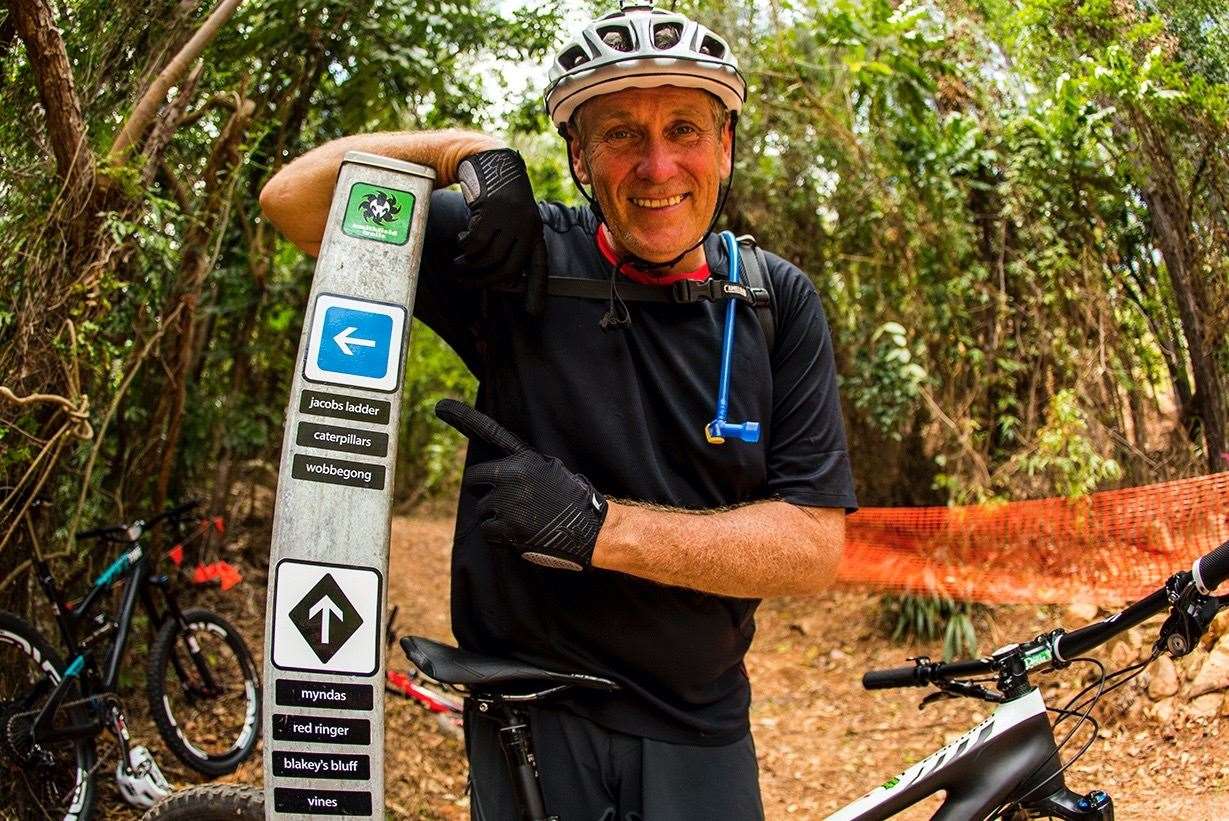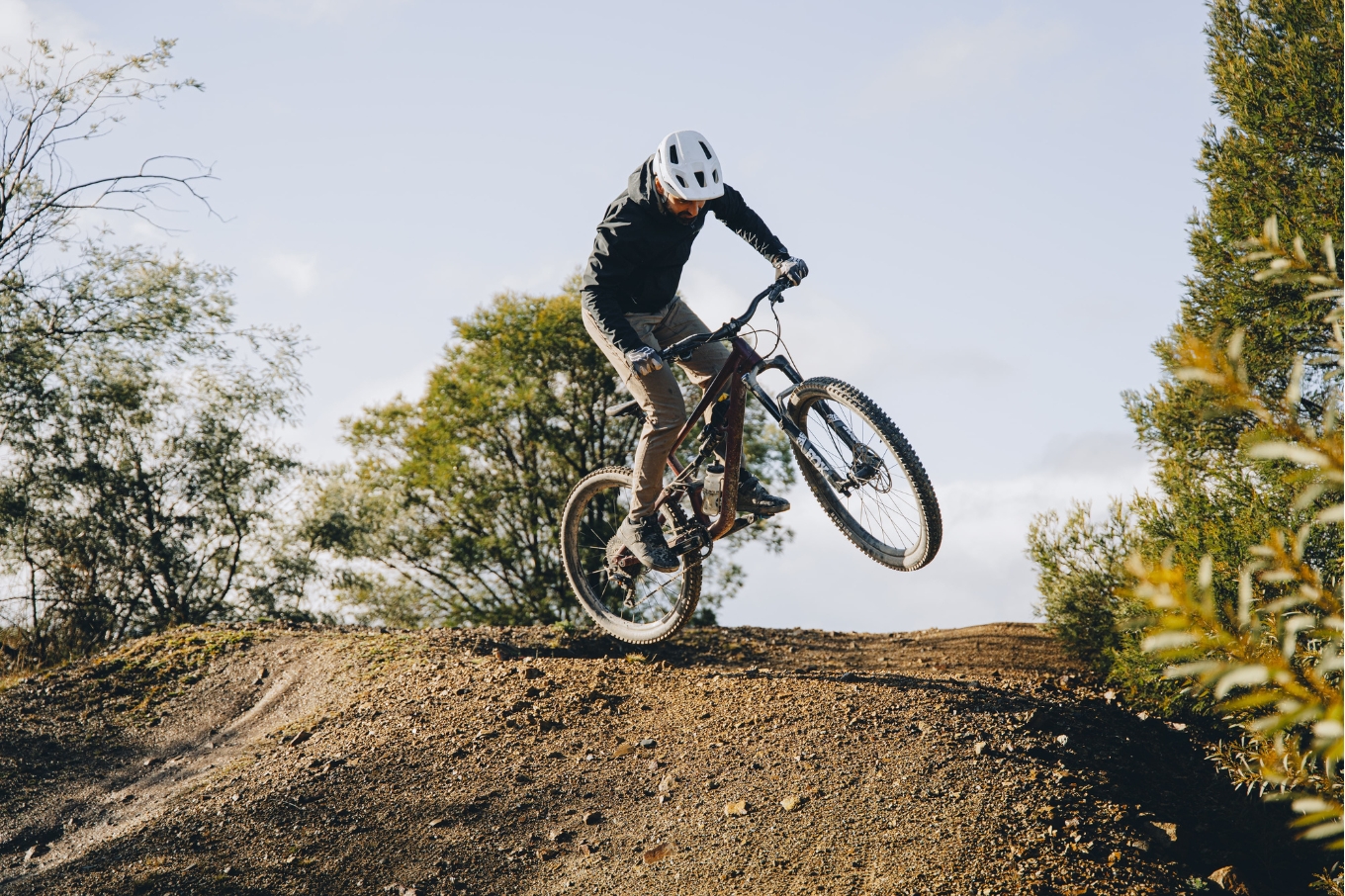Glen Jacobs - building trails for the 78%
Glen Jacobs is a person whose name is synonymous with mountain biking.
Words: Kath Bicknell
Glen Jacobs is a person whose name is synonymous with mountain biking. What started as a few mates pushing their bikes up hills and finding playful, two-wheeled ways to return to the bottom, has led to a career building trails that have come to define our sport. When the UCI saw the types of trails Jacobs and his crew were building in Cairns for the 1997 World Mountain Bike Championships, he was offered a job as a professional race track builder, the first in the world.
Fast forward almost twenty years, and Jacobs’ company, World Trail, has moved from designing tracks for racing to delivering world class experiences for recreational riders. The sport’s biggest growth area is now adventure tourism and, as Jacobs is quick to point out, this means more people riding bikes, more often.
 Jacobs built the trails in Smithfield that helped put Australia on the global MTB map – and he and his team rebuilt them for the 2014 and 2016 World Cups. photo: Tim Bardsley-Smith.
Jacobs built the trails in Smithfield that helped put Australia on the global MTB map – and he and his team rebuilt them for the 2014 and 2016 World Cups. photo: Tim Bardsley-Smith.“People will travel to a destination to ride,” says Jacobs likening mountain biking to other popular landscape-based sports like skiing or climbing. “You are going to travel to Atherton, you are going to travel to Derby, you are going to travel to Stromlo, in Canberra, you are going to go to all these different places to ride.”
Atherton, in Tropical North Queensland, Derby, just outside of Launceston, and Canberra’s Stromlo Forest Park, are just a few of the places where mountain bike tourism has become a critical part of the economy because of World Trail’s work. Key to the success of these trail networks is a design philosophy that caters to a recreational majority and gets the broader community on board.
Jacobs explains that when you look at mountain bike sales, 78 per cent are to the green circle and blue square riders. “We build trails for them. We build for the people who will evolve the sport; who want to get better.”
The remaining 22 per cent is split almost equally between beginner riders, and the core group of riders and racers that drive innovation and the sport’s image. “Of course we build core trails, all that World Cup stuff, we’ve done that for years,” says Jacobs, who was recently inducted into the Mountain Bike Hall of Fame in California, USA.
If you primarily build double black diamond trails, riders who are new to the sport will make a quick exit, Jacobs explains. The growth of the sport and its infrastructure will come to a quick halt.
“If you build for the beginners – and we’re not talking footpaths, we’re talking mountain bike trails, like Atherton – people will go and ride, and they will enjoy the sport. It keeps you within the activity if you have trails to ride on that aren’t going to hurt you.”
“If you primarily build double black diamond trails, riders who are new to the sport will make a quick exit”
While the extensive Atherton trail network certainly caters to the 78 per cent-ers, there are several sneaky line choices throughout the park that advanced riders will spot to keep them on their toes. For beginners, who are less skilled with picking a line and finding good flow, piles of rocks on the sides of the trails are cleverly used to guide riders’ eyes, bodies and tyres. “We watch the tyre marks of what the locals ride and we can move the adjustment chokes in or out. You can make it faster or slower if you like, so you end up having the perfect flow.”
Predictability is also key, as is constantly refining what good trail building means. “I get a question sometimes, ‘Which is your best trail?’ Well, probably the latest one. The one we’re building right now!” says Jacobs. “We’ve got all our history of whatever we’ve built. Stonefly (at Mt Buller) is still fantastic, but we’ve evolved from there. Everything we learned from Stonefly, we put in Ridgy Didge, Trail 6, at Atherton.”
After Atherton, the crew returned to Mt Buller to build the 40km IMBA epic trail. The lessons learned from those trails informed the team’s work in Derby. “The terrain sort of depicts what the outcome’s going to be,” adds Jacobs, “because of the soil, the rocks, the hills, the slope and everything like that. But again, every minute, every hour, every day, we are getting better at what we do.”
 Jacobs and World Trail have built some truly stunning trails. Photo: Andrew Railton
Jacobs and World Trail have built some truly stunning trails. Photo: Andrew RailtonAs a rider, travelling from one destination to another, you can feel this evolution in the way the terrain uses the hill, the way your body moves through corners, and how up hill transit trails feel increasingly effortless. A growing number of other trail building companies are bringing their own style to the sport too. So what’s next?
“I would say probably more wilderness trails,” says Jacobs, looking at what’s going on overseas and adapting it to the growth of the sport locally. “Trails that radiate out from the townships, and linking the towns.
“Things like in Canada where you’ve got these trails that go for days on end. They exist in North Queensland, they’re everywhere, but they haven’t been formalised yet for mountain biking. You know, signage, links, going from one mountain top, to a waterfall, to another valley to a mountain top, and days and days on end.”
Achievable adventures are about to get even bigger. Whether you’re in the 78 per cent, or sit on one side of it or the other, there’s no doubt that with the current boom in mountain bike tourism, it’s certainly an exciting time to be involved.







